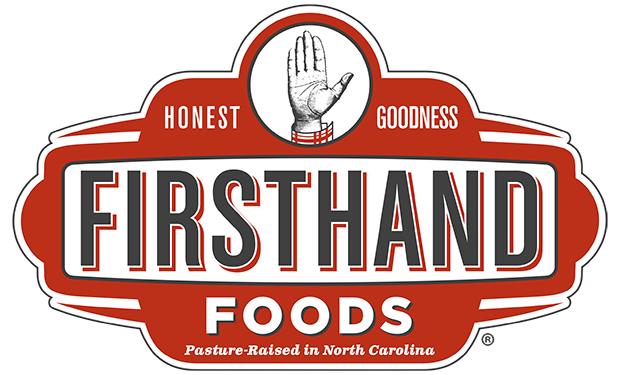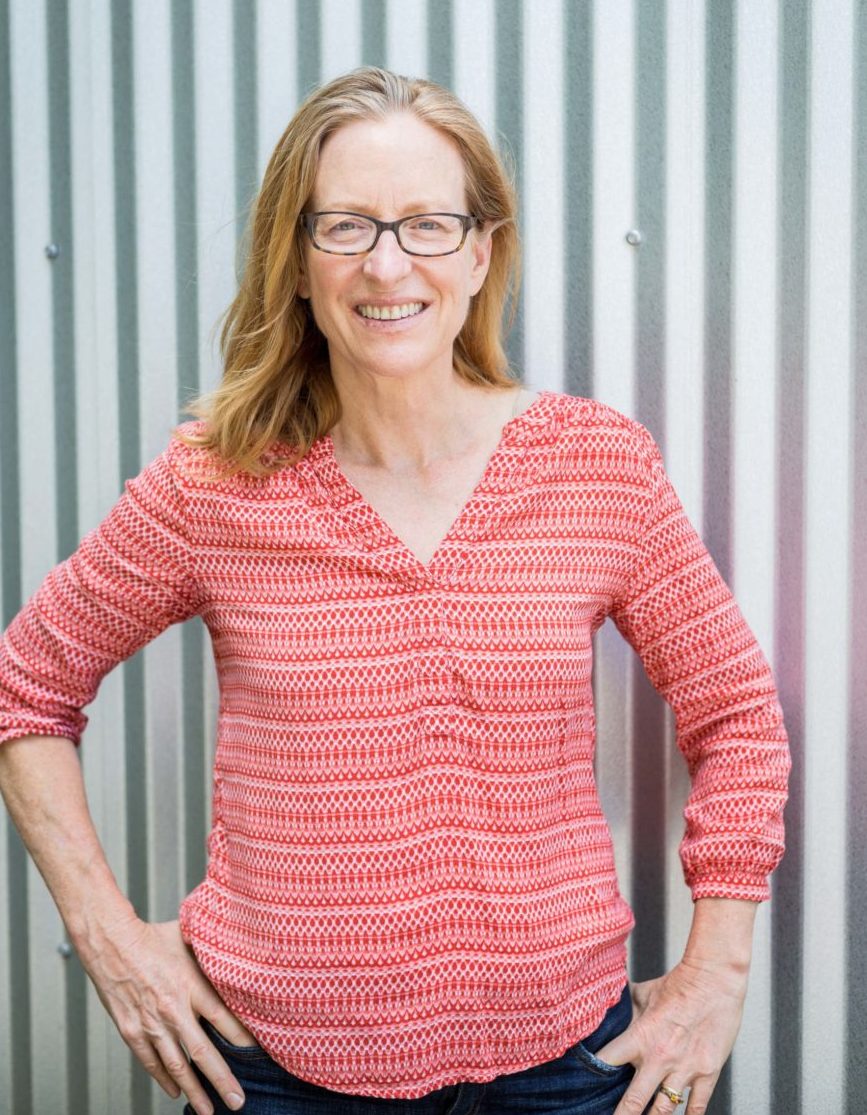“How do we scale the supply of local, pasture-raised meats while holding true to our values of accountability, quality, and dignity?” That was the question we asked ourselves 12 years ago when we began developing the business model for Firsthand Foods. When we were thinking about scale, we were thinking about moving into local restaurant and institutional markets beyond the farmers market, which at the time was one of the only places a chef or consumer could find local, pasture-raised meats. Today, we have the people and systems in place to support a wide variety of wholesale customers and have proven that our business model works to achieve scale at the community level.
While we’ve been successful locally, according to New Hope Network, pasture-raised and grass-fed meats remain a very small piece of the overall meat market. Think one percent of sales in big box stores like Walmart, four percent in specialty stores and 15 percent in natural foods outlets. The good news is the market for grass-fed and pasture-raised meats is growing. Shoppers remain interested in meats raised in ways that are better for themselves, the animals and the planet. The bad news is that we as a nation have not yet figured out how to harness that consumer demand to support the development of meat supply chains that truly value people and the Earth.
Part of the challenge at this moment is that we seem to be living in a world of extremes, which makes it difficult to see our way forward. When Covid-19 hit in North Carolina and grocery store shelves were empty of meat, many people became aware of the vulnerability of global supply chains and the value of having access to foods locally. CSA shares sold out overnight and local farmers markets had lines around the block. At Firsthand Foods, we were challenged to find the local processing capacity to keep up with the demand. While it stressed our local supply chains, we were able to respond and begin to grow. Capital, labor and infrastructure needs were exposed and excitement began to build. Maybe THIS is the moment when local and regional food systems will get some serious investment and policy support!
But grocery store shelves didn’t stay empty of meat for that long. Here’s one response to the market opportunity wrought by the pandemic. According to a recent PBS report, beef exporters have been stealing indigenous lands in Nicaragua, intimidating tribal people and sometimes killing them in order to raise beef for US markets. Activists and journalists are just now sounding the alarm, urging American consumers to help end the violence and stop buying beef imported from Nicaragua, some of which may very well be labeled as grass-fed. But without country of origin labeling laws (now abandoned due to corporate lobbying efforts), consumers have no way of knowing if the beef they are buying is from Nicaragua or not.
This situation raises so many questions. What’s wrong with our food economy that this kind of violence still exists? How can we have become so blind to the connections between human suffering and our excessively convenient food supply? What about the global warming implications of raising beef on indigenous land and shipping it long distances? How can this be happening when we have plenty of beef right here in our own country? (At Firsthand Foods, we have a waiting list of beef farmers who want to join our network and be a part of a local supply chain). How do we dismantle the giant corporate structures that control it all? Where do we go from here?
This is where the concept of food sovereignty is helpful. Food sovereignty is the ability of a people to feed themselves – to have the resources and know-how – to produce and consume their own food. This should be a basic human right. When we eat imported beef raised using violent means on stolen land in Nicaragua, we are not only undermining the food sovereignty and humanity of the Nicaraguan people but also of ourselves.
When we raise our own food and purchase food from local farmers and businesses, we are fostering community food sovereignty. We believe food hubs like Firsthand Foods, which strive to support transparent supply chains that put people and planet first, are key building blocks of food sovereignty. Food hubs operate at a human-scale and are in a unique position to make vital connections and build transparent supply chains. There are just over 350 regional food hubs in the nation, all of them have emerged within the past 10 years and most of them are demonstrating financial resiliency. Food hubs provide critical food systems infrastructure and we believe every community should have one!
Food hubs can help build out a distributed food network in which numerous individual entities work together in partnership to achieve scale and impact and meet the needs of communities. This is in sharp contrast to the way things are now in which most of our food is brought to us through a few centralized, large-scale monolithic companies at the national and global level. Yes, those systems are financially efficient but they come at a great cost beyond the food itself. While a patchwork food system is less efficient and can be on face value more expensive, it may be our only hope for redressing the social and environmental injustices wrought by our current system.
To build a better food system in which communities are empowered and able to feed themselves will require all of us to take our blinders off and fully understand the societal costs of our current system. It will take leadership at the local and national level to design, fund and build human-scale solutions. It will require us to consider local food and farming infrastructure on par with other critical community infrastructure like transportation, wastewater management, broadband and the power grid. It will require partnerships that bridge political, cultural and racial differences.
As we look out at the next 10 years, we are committed to staying rooted in community, creating more opportunities and adding value for our farmers, processing partners and customers. At the same time, we’re excited to build on the strengths of our model, to diversify our partnerships and to expand regionally to neighboring states and localities. Collectively we envision dramatically increasing the production and consumption of pasture-raised proteins and in the process helping to address global warming and racial inequalities in the food and farming sector. We look forward to joining leaders in a national movement to build a more just and resilient food system.
As we speak, we’re putting our visionary hats on to imagine what a better food system actually looks like: real transparency, consumer access, small farmer opportunities, supportive federal policies, and more. If you’re as excited about that vision as we are, sign up to receive our newsletter – we’ll send our vision of a more equitable and sustainable food system to your inbox by year end.

